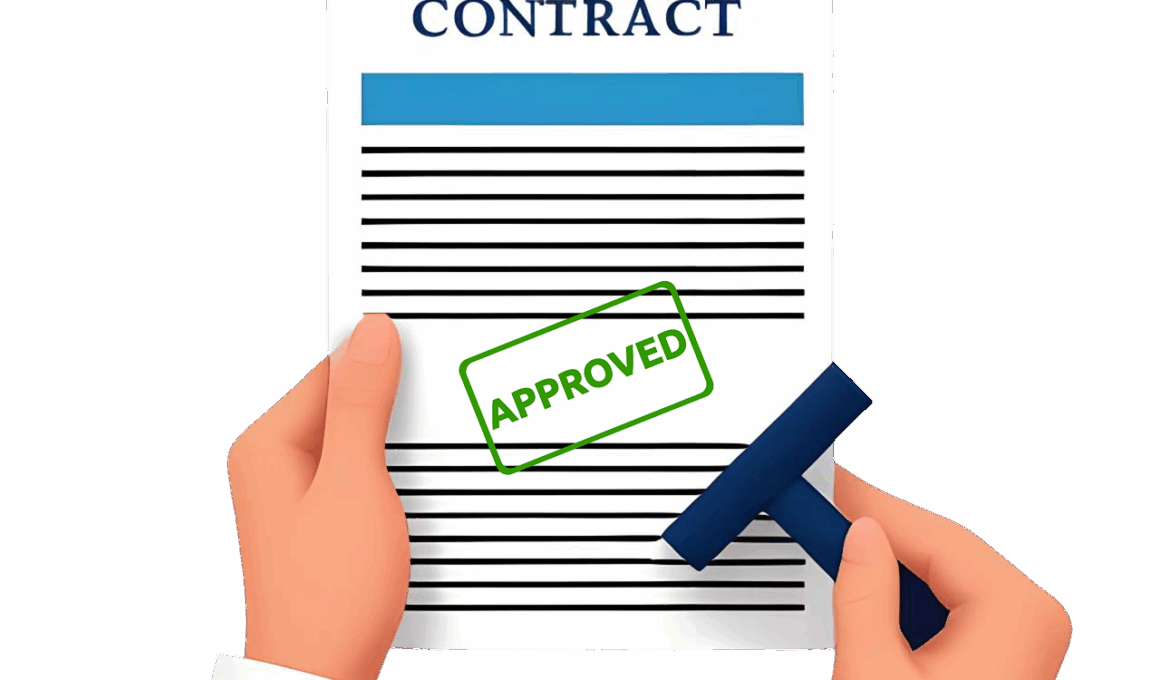Supply Chain Finance Compliance: Common Pitfalls and How to Avoid Them
Compliance within supply chain finance is vital for optimizing operations while adhering to laws and regulations. Industries face several challenges in this regard, including regulatory complexity and evolving standards. Organizations often find themselves navigating a maze of local, national, and international rules. Ensuring that all stakeholders understand compliance requirements can be the first significant hurdle. Lack of training or awareness can lead to unintentional violations; hence, investment in ongoing education is crucial. It is also essential to foster a culture of compliance throughout the organization. This culture should promote transparency and accountability among all team members, ensuring that everyone takes compliance seriously. Developing an effective compliance strategy is also critical. Organizations should identify potential risks and regularly audit their processes to mitigate these risks actively. Failure to comply can result in penalties that not only are financial but can also harm the organization’s reputation. Therefore, understanding the common pitfalls is essential to avoid them and ensuring a robust compliance program that positions the organization for success.
Another common pitfall in compliance is inadequate documentation of processes and transactions. Documentation plays a pivotal role in establishing transparency and ensures that all activities can be substantiated should an audit occur. Consistent record-keeping can prevent discrepancies that may lead to compliance breaches. Companies should also prioritize investing in advanced technology and software that automate documentation processes. Leveraging technology simplifies tracking and reporting while minimizing manual errors that could arise in hypothesized scenarios. Additionally, organizations should focus on ensuring that all documentation is easily accessible to relevant stakeholders. Regular training should incorporate best practices for documentation; thus, employees understand their responsibilities in maintaining accurate records. Another facet to consider is the importance of data protection, especially when dealing with sensitive financial information. Ensuring compliance with data protection laws like GDPR or HIPAA can also protect organizations from hefty fines while safeguarding customers’ trust. Furthermore, collaborating with external experts in compliance can provide valuable insights and best practices. Engaging consultants or legal experts helps navigate complex regulatory landscapes effectively, ensuring that the organization complies with applicable laws and standards.
Another major pitfall pertains to the lack of a standardized framework for compliance. Different departments may implement varying compliance measures, leading to inconsistencies that could jeopardize the organization’s standing. It is essential that every department, from finance to procurement, operates under a unified compliance policy, which simplifies adherence and clarifies responsibilities. Implementing standardized protocols ensures that everyone works towards the same goals. Regular training sessions should be customized for each department, reflecting the unique compliance scenarios they encounter. These sessions should be updated consistently to align with evolving regulations. Furthermore, it’s critical to foster collaboration between departments to share insights and updates on compliance issues. Mechanisms for communication, such as regular compliance committee meetings, can facilitate this exchange of information. There should also be designated compliance officers to oversee these initiatives and ensure that best practices are shared across all sectors. Without a cohesive approach, companies may find themselves exposed to unnecessary risks, failing to meet compliance standards, and facing potential penalties. Establishing a systematic, unified framework is not just beneficial; it is a necessary strategy for any business that seeks to thrive.
Failure to Integrate Compliance into Everyday Operations
A critical mistake several organizations make is treating compliance as a separate activity rather than integrating it into daily operations. Compliance should not be viewed as an afterthought but as a fundamental aspect of the corporate culture. When compliance is integrated into everyday tasks, all employees are more likely to understand its importance and adhere to regulations. This should begin with leadership; if executives prioritize compliance, employees will inevitably follow suit. Regular workshops and seminars discussing compliance should be woven into the fabric of company culture, facilitating an environment where compliance becomes second nature. This can involve creating compliance champions within departments who can advocate for the importance of adherence. Moreover, incorporating compliance metrics into performance evaluations adds an additional layer of accountability. Employees should be recognized and rewarded for their compliance efforts, encouraging proactive behavior rather than reactive responses. Additionally, technology can help in this integration; implementing compliance software that is easily accessible during the day-to-day operations aids in fostering a culture centered around compliance. In doing so, organizations can significantly reduce risks and enhance their overall compliance posture.
The risks associated with non-compliance are not only financial; they can also damage trust in the organization among stakeholders. Many companies focus solely on the potential fines or penalties without considering the reputational damage that accompanies compliance failures. The damage can be far-reaching, affecting customer loyalty, investor confidence, and relationships with partners. To prevent this, organizations must prioritize strategies that not only focus on avoiding penalties but also build a reputation for integrity and ethical conduct. Transparency in processes can foster trust among stakeholders; thus, organizations should consider regular communications, like newsletters or public reports, discussing their compliance efforts and challenges. Additionally, fostering strong relationships with regulatory bodies can be beneficial. Open lines of communication can result in more understanding and possibly leniency during compliance assessments. Involving all levels of the organization in compliance discussions can lead to better awareness of potential issues and reduced risks. Companies should emphasize the collective responsibility for compliance and highlight the positive impacts of adherence on overall success, guiding them to seamlessly integrate compliance into their core business strategies.
Overlooking Continuous Improvement
Another common oversight in supply chain finance compliance is not embracing continuous improvement. Regulations and market conditions continuously evolve, necessitating that organizations regularly assess and adapt their compliance programs. Implementing a compliant strategy should be an ongoing process rather than a one-time endeavor. Regular audits and assessments are essential for identifying areas for improvement. They help organizations recognize gaps in their compliance frameworks and develop strategies to address these deficiencies effectively. Engaging employees at all levels in this process is crucial; they often have insights into practical compliance challenges. Organizations should encourage feedback loops that allow employees to voice concerns about compliance infrastructure. Incorporating this feedback can lead to more innovative solutions to mitigate potential risks. Additionally, leadership should actively participate in compliance maintenance, providing the necessary resources and support to facilitate continuous improvement initiatives. Attending industry events, conferences, or webinars can further enhance understanding of emerging compliance trends and technologies. Keeping abreast of these developments ensures the organization is ahead of potential pitfalls. Therefore, creating a proactive compliance environment allows organizations to stay compliant and gain a competitive edge.
The final pitfall to consider is not utilizing data analytics in compliance efforts. Many organizations gather extensive data but fail to leverage it for compliance monitoring and reporting. Data analytics can provide invaluable insights that allow companies to identify patterns and potential red flags in their operations. By employing advanced analytics tools, organizations can monitor compliance metrics continuously, catching issues before they escalate. Furthermore, employing machine learning and AI can help predict compliance failures based on historical data, offering organizations a proactive approach to risk management. Data visualization tools can also present compliance data in ways that are easier to understand and act upon. Companies should invest in data-driven compliance infrastructure that facilitates timely reporting and analysis. Regularly analyzing compliance data not only improves current practices but also aids in forecasting future compliance requirements based on trends. Ensuring that all departments are informed of compliance analytics findings promotes a unified effort towards compliance. As data becomes increasingly important in driving decisions, integrating it effectively into compliance will better position an organization in navigating challenges successfully.
The comprehensive approach to mitigating the common pitfalls in supply chain finance compliance requires individual and organizational commitment. Drawing from the insights discussed, companies must prioritize developing a robust compliance program, focusing on ongoing education, documentation integrity, process standardization, and employee integration. Additionally, fostering a culture of transparency and accountability enhances overall adherence to compliance standards. Organizations should actively engage with compliance experts to navigate regulations and technological developments effectively. Moreover, having a proactive mindset towards continuous improvement and adapting data analytics tools will streamline compliance efforts and aid in the identification of potential risks. By working cohesively across departments, organizations can create a unified compliance framework that empowers employees while safeguarding the business’s reputation and integrity. Ultimately, organizations that commit to these steps are likely to not only avoid pitfalls but also enhance their overall operational effectiveness. Compliance, when effectively managed, can serve as a competitive advantage, demonstrating to stakeholders that the organization is committed to ethical practices and responsible governance. As compliance landscapes become more complex, adapting to regulatory changes and challenges can help bolster trust, ultimately benefiting the organization in the long run.


